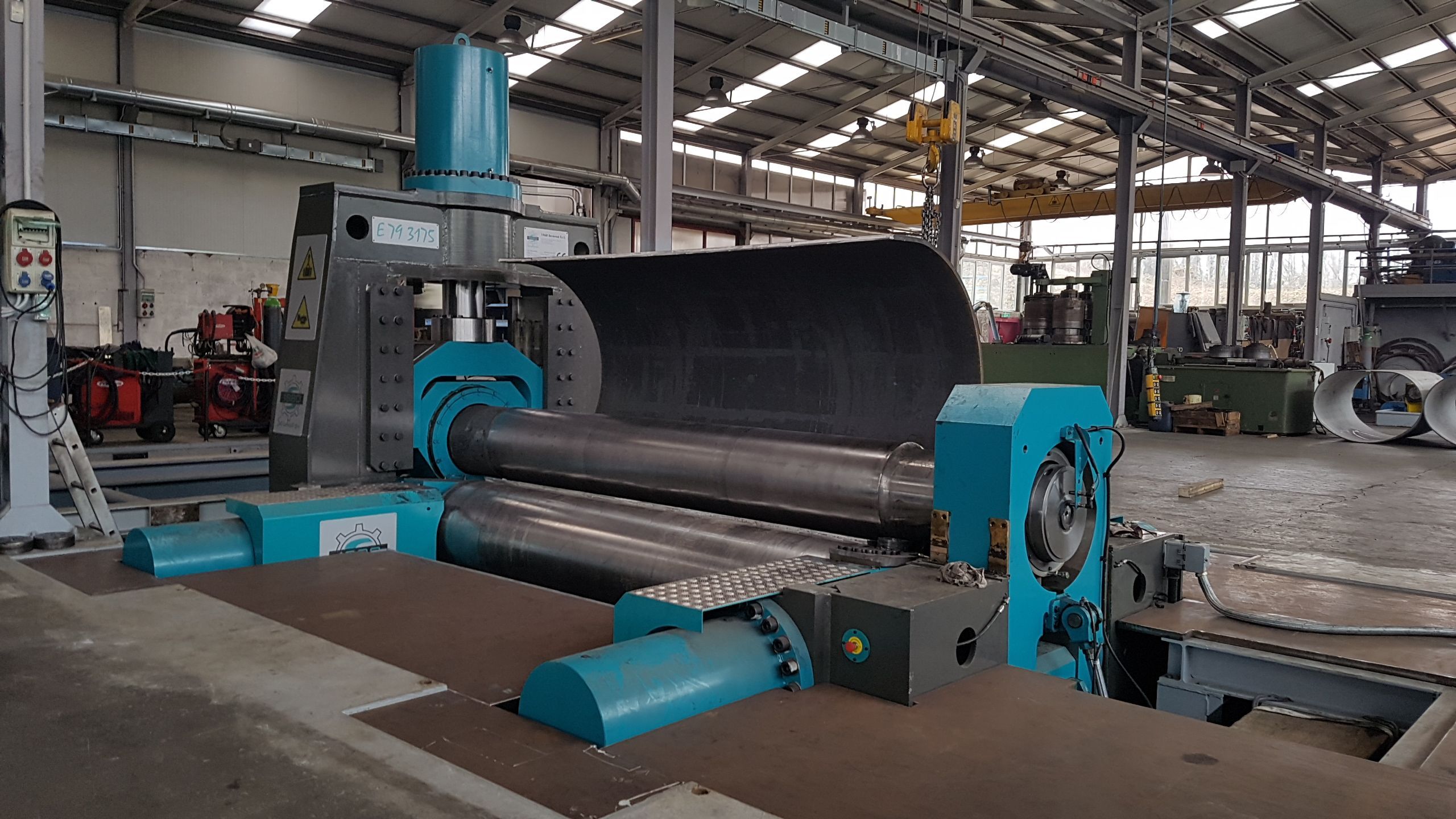Bending rolls, also known as roll benders, are machines used to bend metal sheets, plates, and profiles into cylindrical or conical shapes.
Bending roll is a machine used in metalworking and fabrication processes. It is also known as a plate rolling machine, roll bender, or simply a roll. The bending roll is designed to shape and curve metal plates and sheets into various forms, such as cylinders, cones, and arcs. The machine typically consists of three or four rolls positioned in a triangular or pyramid arrangement. The top roll, called the "pinch roll" or "drive roll," applies downward pressure to the metal sheet. The two lower rolls, known as the "backing rolls," support the plate from below and provide the necessary bending force. In some machines, an additional roll called the "side roll" is present to guide the plate during the bending process. The bending roll works by feeding the metal sheet between the rolls and gradually applying pressure to deform it. The operator can adjust the position and alignment of the rolls to achieve the desired curvature and radius. Depending on the machine's capabilities, it can handle various thicknesses and widths of metal sheets. Bending rolls find extensive use in industries such as construction, shipbuilding, oil and gas, and metal fabrication. They are employed to create cylindrical tanks, pipes, pressure vessels, and other curved components needed in various applications.
These machines use a set of rollers that apply pressure on the material to gradually bend it into the desired shape. Bending rolls come in different configurations depending on the specific application. Three-roll and four-roll machines are commonly used for heavy-duty applications, while lighter-duty machines may use just two rolls. Some machines are designed for specialized applications, such as the production of pipes or tubing. Bending rolls are widely used in industries such as manufacturing, construction, and metalworking, and are highly versatile and efficient tools for a variety of bending applications. They can be operated manually or through computer numerical control (CNC) systems for increased precision and automation. Some models offer additional features, such as automatic material positioning, programmable bending sequences, and real-time monitoring of bending parameters. Overall, bending rolls are important machines for metalworking and fabrication.
